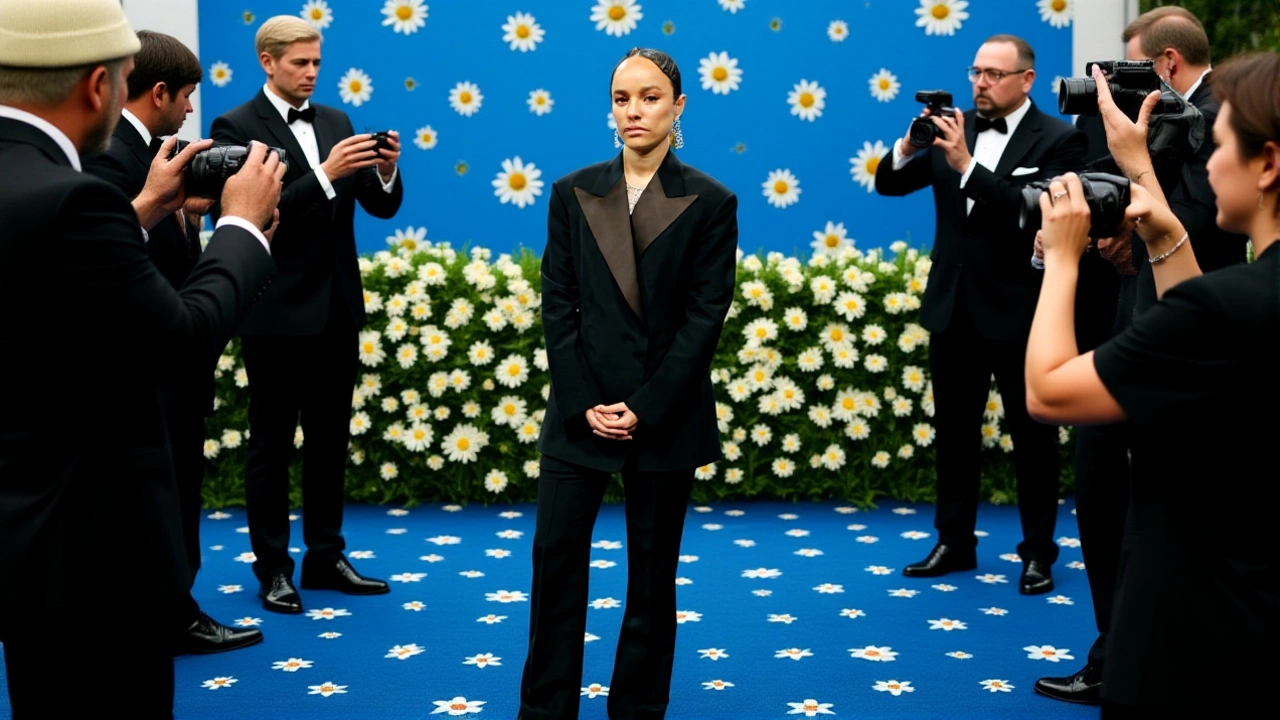
When Grace Wales Bonner, the 35‑year‑old British‑Jamaican designer, was announced as the new Creative Director of Hermès International S.A.’s men’s ready‑to‑wear, the fashion world collectively held its breath.
The declaration came on Tuesday, 21 October 2025, exactly at 12:00 UTC, via a formal communiqué from Hermès’ artistic director Pierre‑Alexis Dumas. He praised Bonner’s “contemporary vision of fashion, craftsmanship and culture” and framed the move as the start of a fresh dialogue between the house’s heritage and today’s cultural moment.
Background: Hermès and Its Menswear Legacy
Founded in 1837, Hermès has long been synonymous with equestrian leather goods, silk scarves, and, more recently, high‑end apparel. Its menswear division has been shepherded by a single artistic director for 37 years – Véronique Nichanian. Appointed by then‑CEO Jean‑Louis Dumas in 1988, Nichanian’s tenure is the longest in any major luxury house.
When Nichanian announced her departure in early October 2025, the industry braced for a seismic shift. Hermès’ headquarters at 24, rue du Faubourg Saint‑Honoré, Paris became a hub of speculation, with insiders wondering whether the house would continue its classicism or pivot toward a more avant‑garde approach.
Grace Wales Bonner’s Journey to the Top
Bonner’s story began in the South London estate of Peckham, where her Jamaican heritage blended with a gritty urban landscape. After graduating from Central Saint Martins College of Art and Design in 2013, she launched her eponymous label in 2014, focusing on menswear that intertwined scholarly references with tactile fabrics.
Her early collections bore titles like “Ebonics” and “Mumbo Jumbo,” nodding to James Baldwin and Aimé Césaire. By 2018 she’d expanded into womenswear, and the following year secured a high‑profile partnership with Adidas that sold out season after season.
In a 2019 interview with System Magazine, Bonner confessed, “A dream of mine would be to work with a brand like Hermès or even a Savile Row tailoring house.” That remark now feels like a self‑fulfilling prophecy.
Her accolades pile up: Emerging Menswear Designer at the 2015 British Fashion Awards, LVMH Prize winner in 2016, CFDA International Men’s Designer of the Year in 2021, British Menswear Designer of the Year in 2024, and an MBE in 2022. Celebrities from Solange Knowles to Sir Lewis Hamilton have been spotted in her pieces, cementing her status as a cultural conduit.
The Announcement and Immediate Reactions
When Pierre‑Alexis Dumas issued the official statement, he wrote, “Her contemporary vision will continue to shape the style of Hermès men’s ready‑to‑wear, confidently blending her perspective with the house’s heritage.” A parallel release in Le MondeParis echoed the sentiment.
Bonner herself responded, “I am deeply honored to be appointed Artistic Director of Hermès Men’s Ready‑to‑Wear. Joining such a lineage of artisans is a dream realized.” She thanked both Axel Dumas, the company’s CEO, and Pierre‑Alexis for the trust they placed in her.
Industry analysts were quick to note the historic nature of the hire: Bonner becomes the first Black woman to lead a major European luxury house’s menswear department. Commentary appeared in W Magazine, Business of Fashion, and even on the evening news, with many calling the move a “landmark for diversity in high fashion.”
What This Means for Hermès and the Luxury Industry
Hermès is betting on a designer whose work already bridges high culture and street sensibility. By appointing Bonner, the house signals a willingness to evolve without abandoning its meticulous craftsmanship. The appointment may also influence other legacy houses to look beyond the traditional Eurocentric talent pool.
Financially, Hermès’ shares have barely budged since the announcement, but insiders predict a modest boost in menswear sales once the inaugural collection drops. The brand’s annual report for 2024 highlighted a 3.2 % increase in men’s accessories, hinting at a receptive market.
Moreover, Bonner’s ties to events like the 2025 Met Gala – where she served on the host committee for the “Superfine: Tailoring Black Style” theme – suggest she will bring a fresh, culturally resonant narrative to Hermès’ runway shows.

Looking Ahead: The First Hermès Men’s Collection
Bonner is slated to unveil her debut collection in January 2027 during Paris Men’s Fashion Week. According to the Hermès press release, the show will be staged at the historic Grand Palais and will feature a blend of traditional silk jackets and experimental textile treatments inspired by Caribbean vernacular.
Sources close to the design team say she is already sketching silhouettes that marry the house’s iconic “Kelly” leather with shea‑butter dyed fabrics – a nod to her Jamaican roots. Expect collaborations with musicians and visual artists, mirroring her past work with Stüssy and Yohji Yamamoto’s Y‑3 line.
For consumers, the first Hermès men’s ready‑to‑wear line could become a premium entry point, much like the brand’s “H24” sportswear range did for younger shoppers. Retail analysts predict a 7‑10 % uplift in foot traffic at Hermès boutiques worldwide after the runway debut.
Conclusion
Grace Wales Bonner’s appointment isn’t just a personnel change; it’s a cultural moment that could reshape the luxury landscape. If her track record of blending intellectual rigor with street‑level cool translates to Hermès, the house may well write a new chapter in its storied history – one that honors tradition while championing a broader, more inclusive future.
Frequently Asked Questions
How does Grace Wales Bonner’s appointment impact diversity in luxury fashion?
Bonner becomes the first Black woman to head a major European luxury house’s menswear division, setting a precedent that could encourage brands to consider talent from under‑represented backgrounds, potentially broadening the creative pool and influencing hiring practices across the sector.
What are the expected changes to Hermès’ men’s ready‑to‑wear aesthetic?
Industry insiders anticipate a blend of Hermès’ classic tailoring with Bonner’s signature cultural references – think silk jackets featuring Caribbean‑inspired dye techniques and subtle nods to African‑diaspora art, while maintaining the house’s commitment to impeccable craftsmanship.
When and where will Bonner debut her first Hermès collection?
The inaugural collection is scheduled for January 2027 during Paris Men’s Fashion Week, with the runway set at the Grand Palais, one of Paris’s iconic exhibition halls.
What previous collaborations has Bonner undertaken that hint at her future work for Hermès?
Her long‑standing partnership with Adidas, as well as projects with Stüssy and Yohji Yamamoto’s Y‑3 line, demonstrate a knack for marrying high fashion with street culture – a playbook she may adapt for Hermès by integrating sportswear silhouettes with luxury materials.
Who are the key decision‑makers behind Bonner’s hiring?
The announcement was made by Hermès’ artistic director Pierre‑Alexis Dumas, with final approval from CEO Axel Dumas. Their shared vision emphasized continuity of heritage alongside contemporary relevance.
More Articles

Rachel Stevens Opens Up About Co-Parenting Challenges with 'Buying London' Star Ex-Husband Alex Bourne
Former S Club 7 singer Rachel Stevens shares her experiences co-parenting with her ex-husband Alex Bourne, a Netflix reality star. Following their split in 2022, Stevens emphasizes their focus on their daughters' well-being. She also reflects on her new relationship and her journey in her new autobiography, 'Finding My Voice'.

Ms. Dykefire: Queer Answers For Straight Problems
Ms. Dykefire offers blunt, queer-led advice for relationship problems straight advice can't fix. From boundaries to self-worth, she cuts through the noise with real talk - no sugarcoating, no scripts.

Ukrainian Intelligence Scores First‑Ever Kill of Russian Be‑12 Seaplanes
On 21 September 2025 Ukraine’s intelligence troops used kamikaze drones to blow up two Russian Be‑12 amphibious aircraft and a Mi‑8 helicopter at the Kacha airbase in Crimea. The strike marks the first combat loss of a Be‑12 ever recorded. These rare Soviet‑era seaplanes were a key part of Russia’s anti‑submarine effort in the Black Sea. Their loss could cut Russia’s operational Be‑12 fleet in half, dealing a heavy blow to its naval air power.
